Fungi on show
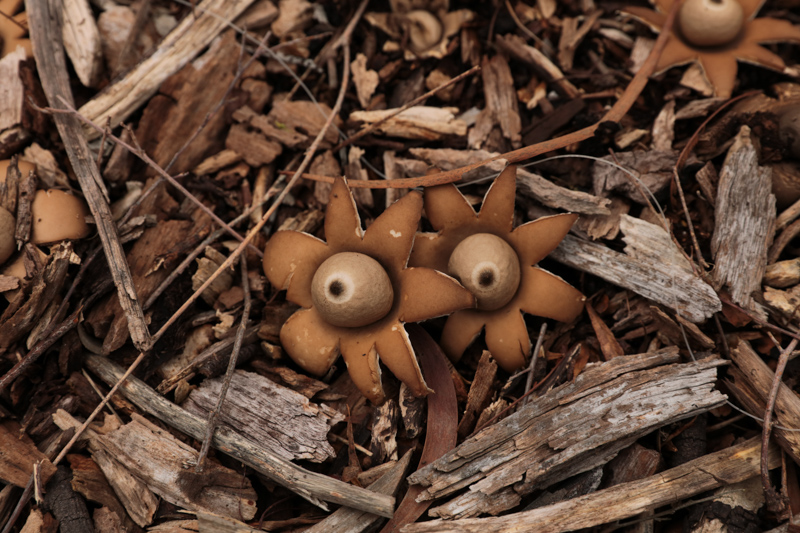
After good rain and cool weather, the fungal sporing bodies – the ‘mushrooms’ – are popping up throughout Westgate Park. As we can’t run fungi forays right now, we will bring you regular updates on what’s appearing in the Park.
Starting with the gilled species, Agrocybe praecox occurs worldwide and is right now the most prevalent in the Park. You can see it in groups right near the main carpark growing on woody mulch. It’s yellow cap generally splits soon after it emerges.
Chlorophyllum brunneum is a handsome mushroom. We strongly discourage eating any fungi from the Park and this species can cause serious illness. It is doing a good job however in breaking down organic material into useful nutrients.
We have been able to identify about 70 species of fungi in the Park but there are some that we can’t be sure of without examination under a microscope.
Others are easily distinguished like Bolbitius titubans but this small mushroom, typically found on grass, changes dramatically from a rounded, bright yellow, sticky cap to a silvery flat one and disappears within days. Unlike most inkcaps that liquify into black fluid, Parasola plicatilis spreads its spores and disappears within 24 hours.
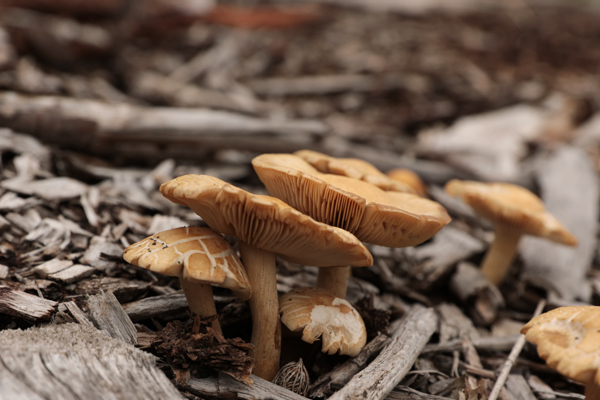
Agrocybe praecox – Spring Agrocybe 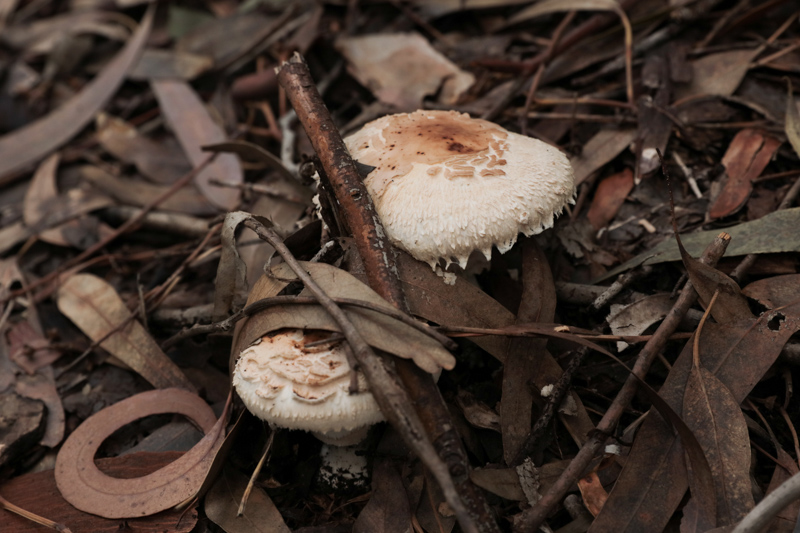
Chlorophyllum brunneum – Shaggy Parasol 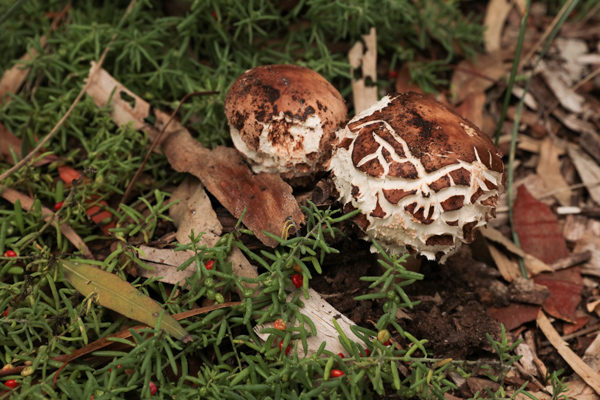
Chlorophyllum brunneum – Shaggy Parasol 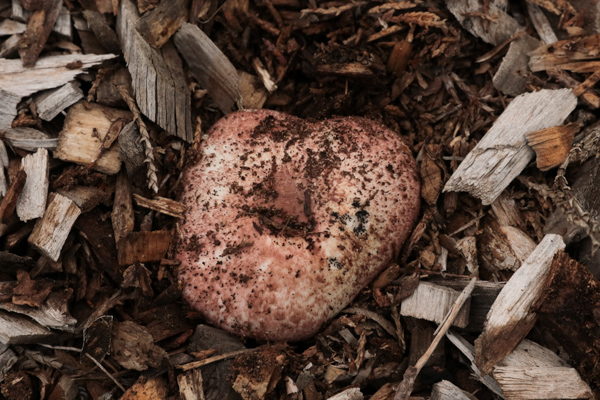
Agaricus sp. 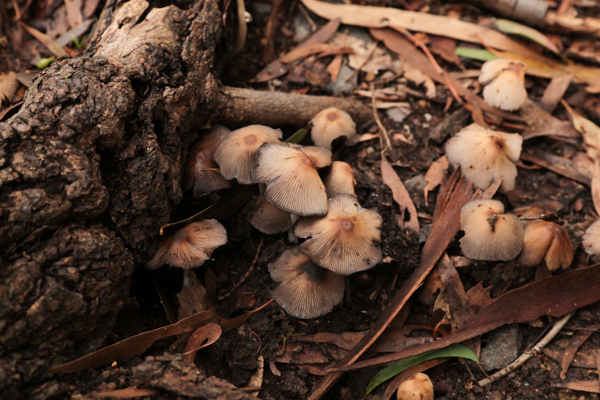
Coprinellus sp. 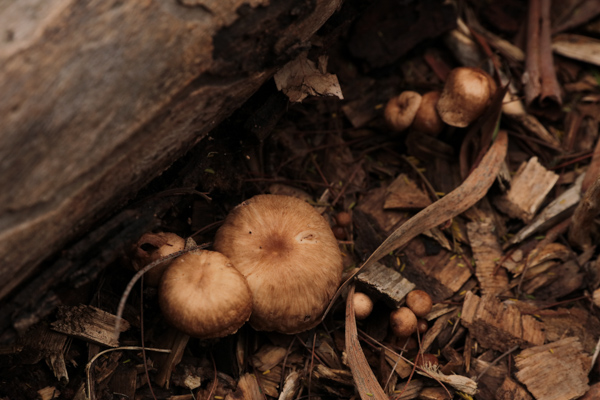
Gymnopus sp. 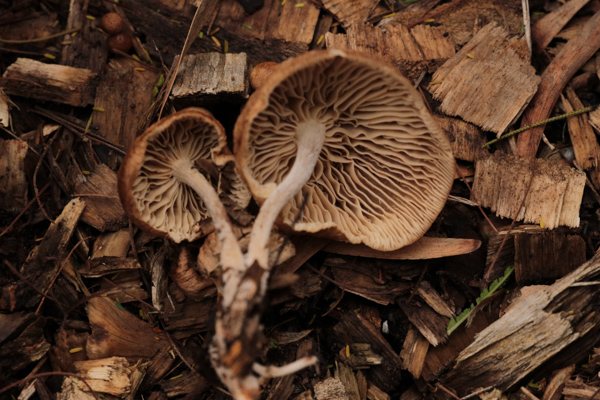
Gymnopus sp. 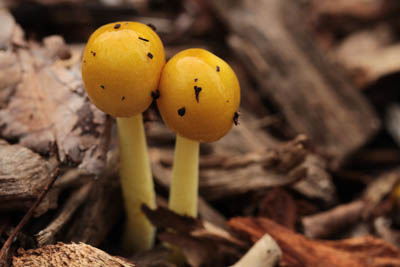
Bolbitius titubans – Egg-yolk fieldcap 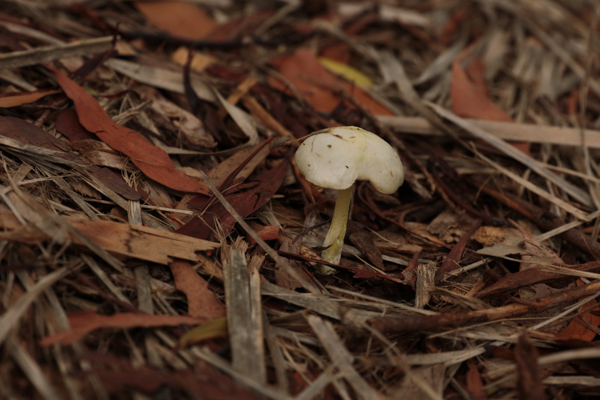
Bolbitius titubans – Egg-yolk Fieldcap 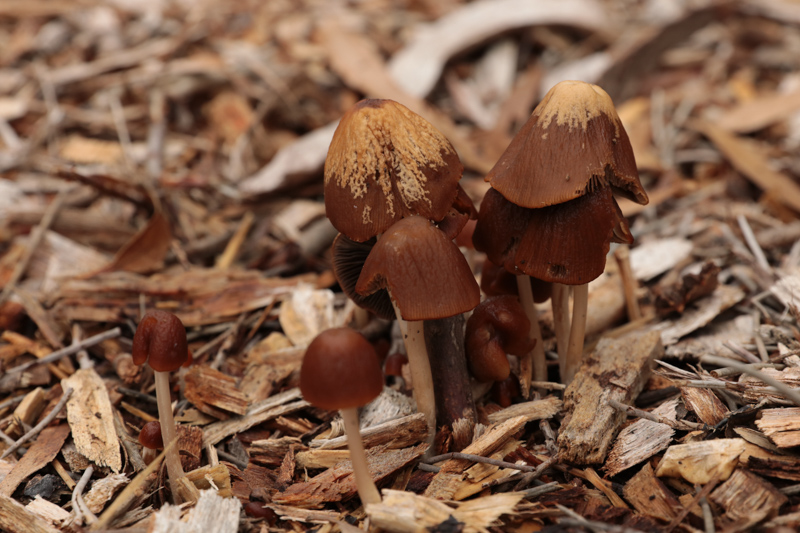
Parasola conopilus 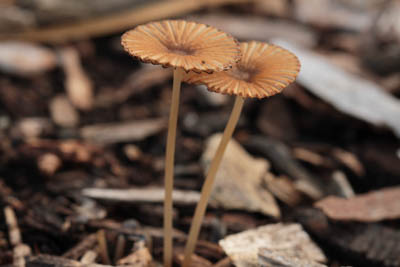
Paarasola plicatilis – Pleated Inkcap
Fungi have evolved with varied means of spreading their spores. Gilled fungi largely rely on wind which is why their caps and gills are lifted up on stems. Aseroe rubra is particularly bizarre. It emerges in an egg-like sac and has up to 8 ‘arms’ and is covered by a sticky, smelly, brown, spore-bearing mass that is walked off or passed through insects that are greatly attracted to it!
Geastrum triplex is as inventive. It is a tiny, double-layered sphere and the outer layer splits to stabilise and expose the papery puffball inside. The small hole at the top allows puffs of spores to shoot out as rain drops on the surface of the ball.
Mycenastrum corium is much larger – ~200mm across – and has a tough outer layer that splits on maturity and the spores are spread by wind and rain. Pycnoporus coccineus is a tough, bright red bracket fungus appearing on dead logs fir much of the year. It has fine, bright red pores on the underside, from which white spores are dispersed.
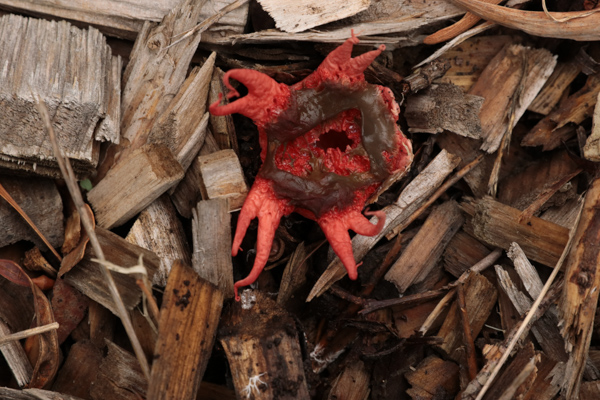
Aseroe rubra – Starfish or Anenome Stinkhorn 
Geastrum triplex – Earth Star 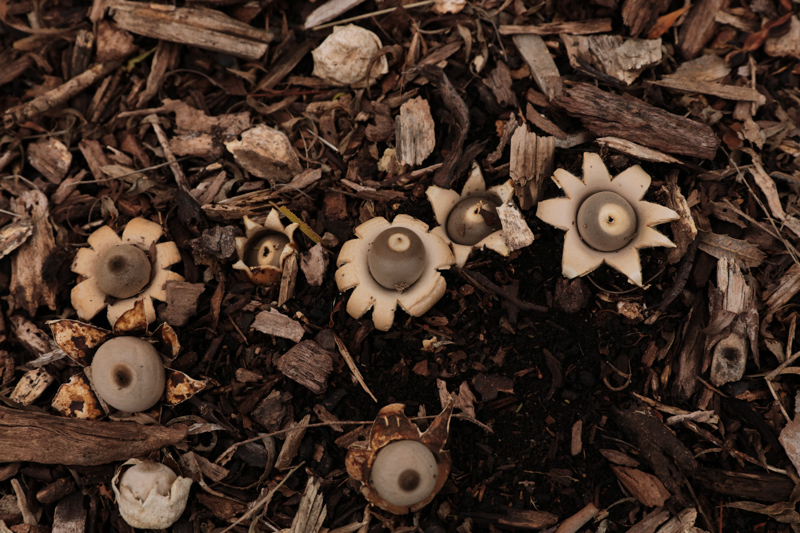
Geastrum triplex – Earth Star 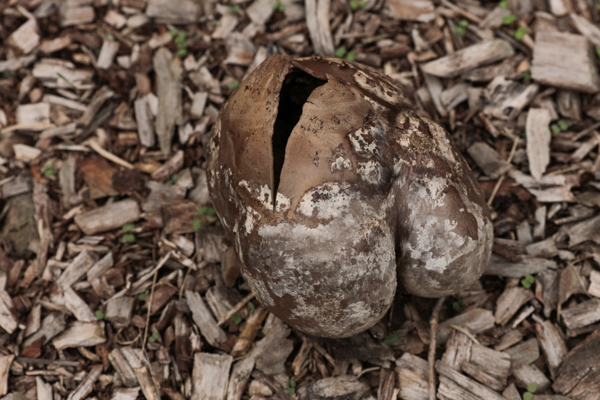
Mycenastrum corium – hard-skinned puffball 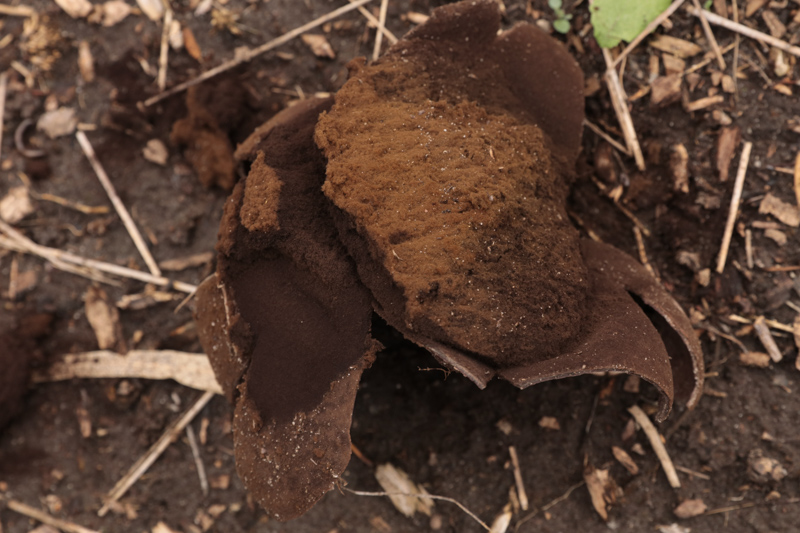
Mycenastrum corium – hard-skinned puffball 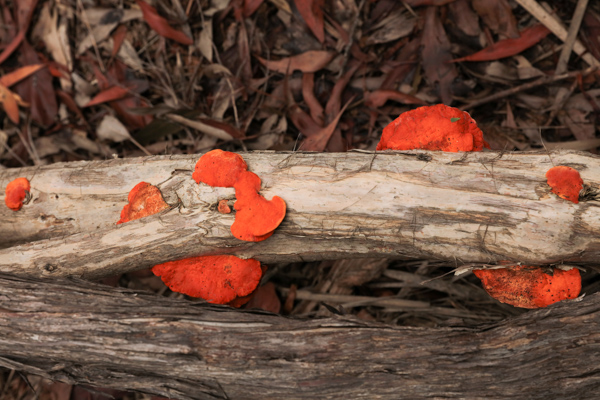
Pycnoporus coccineus – Red Bracket
